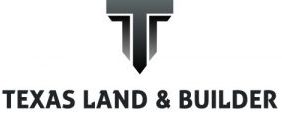When it comes to building materials, lumber plays a foundational role in almost every construction project, whether you’re framing a house, building a deck, or crafting furniture. Understanding the different types of lumber available, and the advantages each type offers, is essential to making informed decisions in your construction projects. In this blog, we will explore four common types of lumber: whitewood, yellow pine, spliced boards, and engineered wood products. Each has its own characteristics, strengths, and specific applications.
1. Whitewood
Whitewood refers to a range of softwood species that are lighter in color and typically include spruce, fir, and pine. It is commonly used in construction because of its affordability and widespread availability. Whitewood is popular for general framing, light construction, and even DIY projects.
Advantages of Whitewood:
- Affordability: Whitewood is one of the most cost-effective options for construction lumber.
- Lightweight: This type of lumber is easy to work with due to its relatively low density.
- Versatile: Whitewood can be used in a variety of applications, from framing to interior finishing.
Disadvantages of Whitewood:
- Durability: Compared to other wood types, whitewood can be less durable and more susceptible to warping or damage from moisture.
- Strength: While suitable for many construction purposes, whitewood is not as strong as some other types of lumber, such as yellow pine, and may not be ideal for heavy load-bearing applications.
2. Yellow Pine
Yellow pine, primarily Southern Yellow Pine (SYP), is one of the strongest and most durable types of softwood used in construction. It is denser and harder than whitewood, making it a popular choice for structural elements and applications that require strength and durability. Yellow pine is widely used in everything from framing to decking and outdoor structures.
Advantages of Yellow Pine:
- Strength and Durability: Yellow pine is stronger than whitewood, making it ideal for load-bearing applications and outdoor projects.
- Pressure-Treatment: It is often pressure-treated for outdoor use, making it resistant to rot, insects, and weather damage.
- Availability: Southern Yellow Pine is abundant and widely available in the U.S., particularly in the southern states.
Disadvantages of Yellow Pine:
- Heavier: Yellow pine is denser and heavier than whitewood, which can make it more difficult to work with and transport.
- Prone to Warping: While stronger, yellow pine is still prone to warping and splitting if not properly dried and treated.
3. Spliced Boards
Spliced boards, also known as finger-jointed lumber, are made by joining shorter pieces of wood together to create a longer board. This process involves using adhesives and a finger-jointing technique that interlocks the pieces to form a single board. Spliced boards are a cost-effective alternative to solid lumber and are often used for non-load-bearing applications like interior trim, molding, or cabinetry.
Advantages of Spliced Boards:
- Cost-Effective: Spliced boards make use of smaller wood pieces, reducing waste and lowering the cost of the product.
- Straightness: Spliced boards are less prone to warping or twisting because they are manufactured under controlled conditions.
- Eco-Friendly: This method reduces waste by utilizing smaller, often discarded, pieces of wood.
Disadvantages of Spliced Boards:
- Limited Structural Use: While spliced boards are suitable for non-structural applications, they are not ideal for load-bearing purposes due to the weaker points at the joints.
- Appearance: Some builders prefer the aesthetic of solid wood over spliced boards, especially when the finger joints are visible.
4. Engineered Wood Products
Engineered wood is a category of man-made wood products that includes plywood, oriented strand board (OSB), laminated veneer lumber (LVL), and glulam (glued laminated timber). Engineered wood products are made by binding together layers of wood or wood fibers with adhesives to create a highly durable and uniform product. These products are designed to meet specific performance requirements and are often used in both residential and commercial construction.
Advantages of Engineered Wood Products:
- Strength and Stability: Engineered wood products are designed to be stronger and more stable than natural wood, making them ideal for structural applications like beams, joists, and flooring.
- Dimensional Stability: Engineered wood resists warping, shrinking, and splitting better than traditional solid wood because it is made to be more uniform.
- Sustainability: These products make use of wood scraps and lower-grade timber, reducing waste and making them an environmentally friendly option.
Disadvantages of Engineered Wood Products:
- Cost: Depending on the type, engineered wood can be more expensive than traditional lumber.
- Moisture Sensitivity: Some engineered wood products, like OSB, can be sensitive to moisture if not properly treated or installed, making them less suitable for exterior use in certain climates.
- Aesthetic Limitations: Engineered wood typically does not have the same natural appearance as solid wood, making it less desirable for projects where aesthetics are important.
Conclusion
Choosing the right type of lumber for your construction project depends on your specific needs and the characteristics of the lumber itself. Whitewood is a cost-effective option for light construction, but its durability may not be ideal for heavy-duty applications. Yellow pine is much stronger and better suited for structural elements, though it is heavier and can warp if not treated properly. Spliced boards offer an economical and sustainable solution for non-structural uses, while engineered wood products provide exceptional strength, stability, and versatility in a wide range of construction applications.
Understanding the differences between these types of lumber will help you make better choices when building your next project, ensuring that your materials meet both your structural and aesthetic needs.
